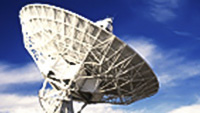Search and order online
Orion docking with Gateway
- Video Online only
- Title Orion docking with Gateway
- Released: 17/05/2019
- Length 00:00:22
- Language English
- Footage Type Animation
- Copyright NASA/ESA/ATG Medialab
- Description
An artist's impression of the Orion spacecraft arriving at the lunar outpost called the Gateway. The Gateway is the next structure to be launched by the partners of the International Space Station.
During the 2020s, it will be assembled and operated in the vicinity of the Moon, where it will move between different orbits and enable the most distant human space missions ever attempted.
Placed farther from Earth than the current Space Station – but not in a lunar orbit – the Gateway will offer a staging post for missions to the Moon and Mars.
Like a mountain refuge, it will provide shelter and a place to stock up on supplies for astronauts en route to more distant destinations. It will also offer a place to relay communications and can act as a base for scientific research.
The Gateway will weigh around 40 tonnes and will consist of a service module, a communications module, a connecting module, an airlock for spacewalks, a place for the astronauts to live and an operations station to command the Gateway’s robotic arm or rovers on the Moon. Astronauts will be able to occupy it for up to 90 days at a time.
A staging outpost near the Moon offers many advantages for space agencies. Most current rockets do not have the power to reach our satellite in one go but could reach the space Gateway. Europe’s Ariane would be able to deliver supplies for astronauts to collect and use for further missions deeper into space – much like mountain expeditions can stock up refuges with food and equipment for further climbs to the summit.
The Gateway also allows space agencies to test technologies such as electric propulsion where Earth’s gravity would interfere if done closer to home. New opportunities for space research away from Earth’s magnetic field and atmosphere are planned for the outpost. Its close position will provide rapid response times for astronauts controlling rovers on the Moon.


